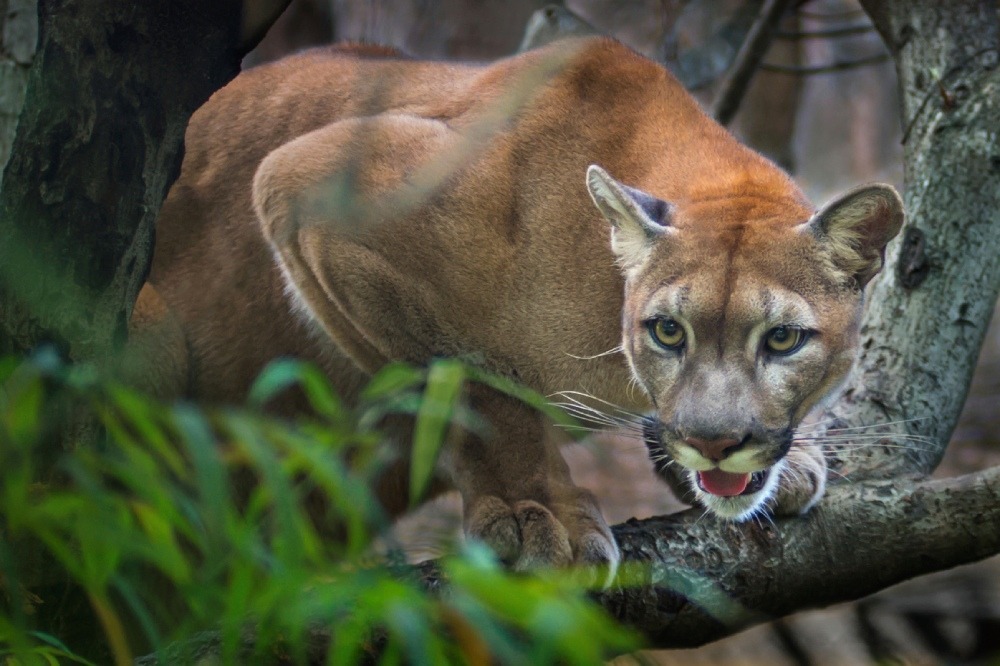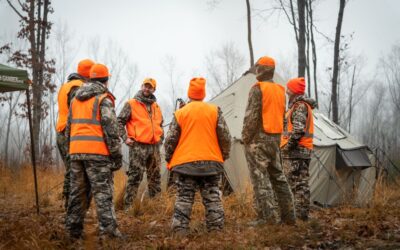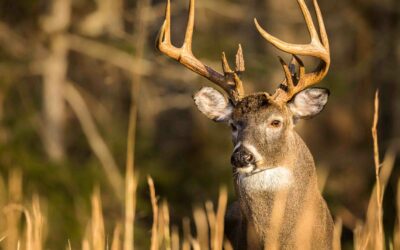This story, reprinted courtesy of The Tennessee Conservationist magazine, first appeared in that publication in 2012. With the October 2015 confirmation of a cougar sighting in Obion County and, a month later, in Humphreys County, we thought the story was timely once again.
Are there cougars in Tennessee?
Tom Sparks could tell something wasn’t right that day in 1920 high up on Spence Field in the Great Smoky Mountains.
He had been herding sheep all his life, covering the range from Little Bald to the Hall Cabin, and he was keenly attuned to their behavior. For some reason they were fidgety and staying close together, lifting their heads up from the thick grass that covered the mountaintop bald to sniff the air more often than usual. The last time Sparks had seen them behave like this a bear was in the area. He squinted his eyes and looked around but saw nothing.
The snorting alarm from his herd came a split second before the tawny stalker attacked Sparks from the rear, but it was enough of a warning for him to get a firm grip on the handle of the knife sheathed at his waist. As the animal tried to bite into his neck he hunched forward instinctively to protect himself and blindly stabbed as hard as he could over his left shoulder. The move was awkward but he felt the blade sink into the attacker’s body. It released its grip and ran away.
Several months later a cougar was shot near what is now Fontana Village. The animal had a scar on its left shoulder; its shoulder blade had been cut it two.
The cat that had attacked Sparks was dead.
This story (recounted here with a bit of creative license) is cited by many as the last confirmed report of a wild cougar in Tennessee. By the end of the 19th century the cougar—also known as panther, painter, puma, catamount and mountain lion—was already rare in the Southeast, the last individuals, aside from those of the separate Florida population, were thought to be in the Smokies. In 1928 Albert F. Ganier, writing in the Journal of the Tennessee Academy of Science, wrote: “…the cougar or panther was at one time abundant in the state…Today the panther is extinct in Tennessee, save possibly a half dozen individuals in the Great Smokies.”
For many years the Eastern Cougar, the subspecies to which the population in Tennessee belonged, has been thought to have gone the way of the Passenger Pigeon. In 2011 that view was made official when, after being on the Endangered Species List since 1973, the Eastern Cougar was declared extinct by the U.S. Fish and Wildlife Service.
Yet cougar sightings in Tennessee and throughout the Southeast have persisted over the years with many reports occurring in and around the Smokies. Dr. Donald Linzey, a biology professor at Wytheville Community College in Virginia who also teaches at Virginia Tech, has been following up on cougar sightings in the region for several decades.
“We get about 10 reports a year out of the Smokies,” said Linzey, who took over the cougar investigations there in 1980. “And I have to make a subjective judgment whether or not the person really saw a cougar. About 45 percent of the reports I’ve followed up on I feel are legitimate. And of those 43 percent involve more than one person.”
He cites several compelling accounts.
“In 1976 a female with two young came down to a creek in the Chimney’s Campground. Lots of people, including a man who ran a wildlife sanctuary, saw these animals. Over the years I’ve had reports of sightings in the Smokies from a veterinarian in Knoxville who’s treated cougars in his practice as well as from a professional wildlife photographer who was coming into Gatlinburg from Cades Cove and who knows the wildlife of the area. Do you tell someone like that they didn’t see what they saw?”
So how does Linzey, author of several guidebooks including “Mammals of Great Smoky Mountains National Park,” and “The Mammals of Virginia”, reconcile these reports with the official governmental view that the Eastern Cougar has died off?
First, he points to the sheer numbers of cougar reports throughout the region. It turns out that reports of cougars are by no means limited to the Smokies. Indeed, all across Tennessee and in surrounding states people are claiming to have seen these big cats. The Cougar Network, a non-profit science organization, lists on its website sightings documented with physical evidence in a number of nearby states including Arkansas, Georgia, Illinois, Indiana, and Missouri.
“My own opinion is that cougars occur in the park. Where they come from, no one can say. There are three possibilities. One, people are releasing them. Two, they are part of the original population, which I think is unlikely. And three, cougars from other areas are migrating in.”
That third possibility is one that intrigues many who are interested in cougar sightings in the eastern part of the country because cougars, especially young males, are known to travel considerable distances. Could wandering cougars from known western populations have ventured to Tennessee?
That wouldn’t surprise Linzey. “As of right now the population in the Black Hills of South Dakota is breeding and expanding. Young males often travel great distances in search of a new territory.”
Illustrating the species’ capacity for long-distance travel, the Missouri Department of Conservation reported in a May 2012 press release that DNA analysis showed that four cougars found in the state the previous year came from three Western states, South Dakota, Montana and Colorado.
In 2011 a cougar that originated in the Black Hills area made national headlines when it was discovered that it had traveled an astonishing 1,500 miles before being struck and killed on a roadway in Greenwich, Connecticut. This marked the first time in more than 100 years that a cougar had been seen in that state.
Additionally, Linzey thinks individuals from the endangered Florida population may also have migrated north over the years, accounting for some of the sightings that have been reported throughout the South. Until recently this was considered unlikely but in 2008 a deer hunter in Troup County Georgia near the Alabama border shot and killed a cougar. The next year the Georgia Department of Natural Resources announced that the animal, which was initially thought to have been an escaped pet, had come from the South Florida population.
But wouldn’t cougars from the West be different than the presumed-extinct Eastern Cougar? Perhaps not. Linzey points to research published in 2000 that used genetic analysis to determine that all cougars in North America north of Nicaragua are actually part of the same subspecies. In other words, the Eastern Cougar was erroneously labeled a subspecies to begin with and was never different from the cats that occur in the western part of the country. Movement between populations in the East and West has probably always been a normal part of the species’ existence.
Despite the many claims of cougar sightings that have been reported in Tennessee over the years, wildlife officials insist there are no wild cougars in the state. They cite a glaring lack of hard evidence.
“The agency line, so to speak, is that there is no official documentation of the presence of cougars occurring in the wild in the state of Tennessee,” says Chris Hunter, furbearer program coordinator with the Tennessee Wildlife Resources Agency (TWRA). “There are many stories about cougars that have made their way to the agency over the years. The only comment I would have on the stories is that I do believe that the citizens of the state truly do believe that they have seen a cougar wild if they say they have seen a cougar. There is always the possibility of captive cougars escaping and we also have documented that folks have misidentified sightings of other animals or their markings as cougars, either by incorrectly identifying paw prints or not correctly identifying the animal on a trail camera that took the photo.”
TWRA officials also point at that until the 1980s it was legal to have cougars as pets in Tennessee without a permit. Once that changed wildlife officials think it’s likely that some owners released cougars rather than go through the permit process. Linzey, too, recognizes that possibility. “Not too long ago you could walk into a pet store and purchase a cougar kitten. Who knows what happened to all those animals.”
Undermining the credibility of a number of Tennessee cougar reports is the fact that many are described as black panthers.
“Wild black panthers have never existed in the wild in North America,” said Hunter. Linzey agrees. “There’s never been a melanistic cougar found anywhere.”
Adding even more confusion are the many hoaxes that have made their way across the Internet. Pictures of cougars taken in other states have in recent years been passed off as being from any of a number of Tennessee counties.
The population of the cat’s favorite prey, white-tailed deer, is booming and cougars have already been confirmed only a few hundred miles away from the state’s border. The bottom line is there are lots of reports, but no hard evidence to back them up.
Yet.
Nearly everyone agrees that it’s only a matter of time before cougars make their way back into Tennessee’s woods.




